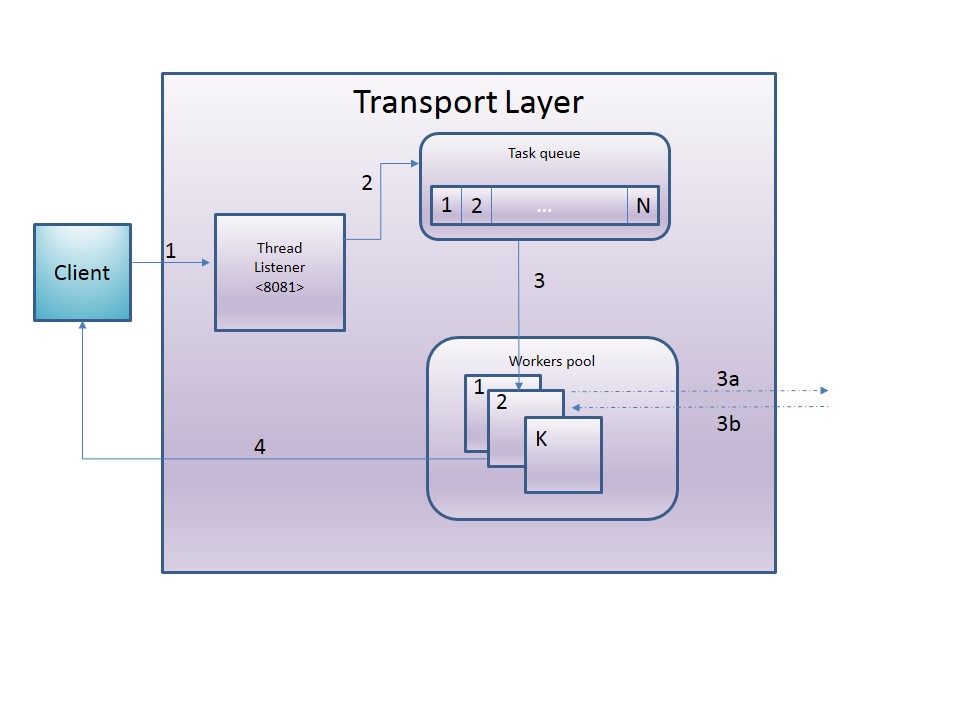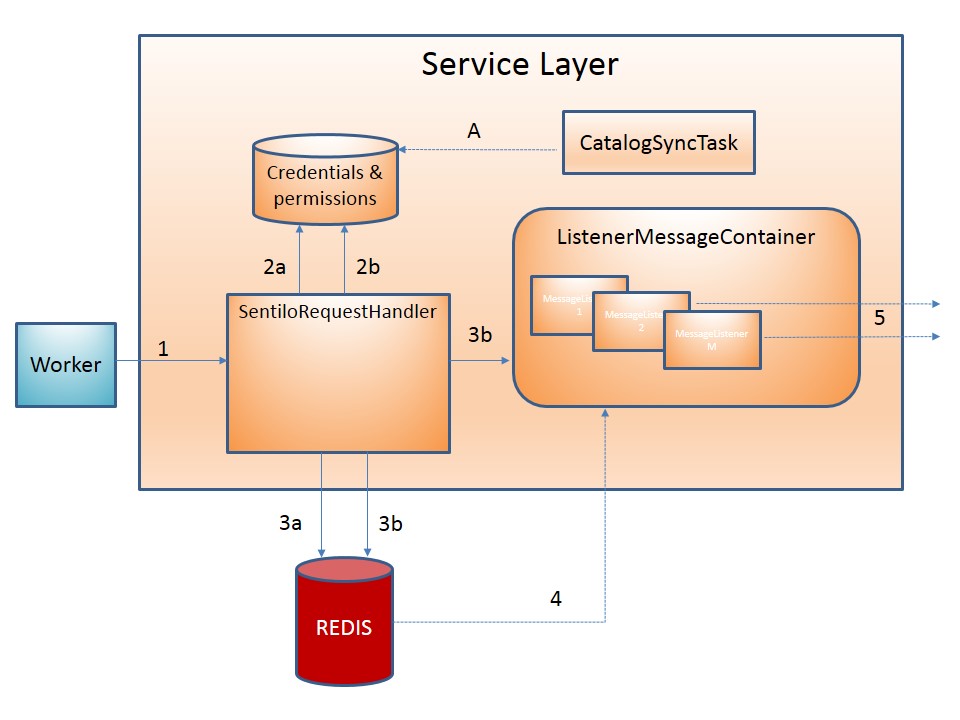Architecture¶
Sentilo is a platform aimed to isolate and communicate the applications that are developed to exploit the information generated from the ground by the layer of sensors deployed across to collect and broadcast this information.
Its main modules are:
- Restful API
- Web Application which provides an administration console and some public visualizers
- Data publication & subscription system
- A memory database for storing real time data
- A non-SQL database for storing less volatile data, like the sensor’s catalog
- Several agents which extend the platform features
Key Concepts¶
This section describes the main concepts of Sentilo. Many of these concepts are discussed later deeply.
You can read also some Technical FAQs.
PubSub Platform¶
Sentilo allows customers to publish and retrieve information and to subscribe to system events. This module is a stand-alone Java process that uses Redis as a publish/subscribe mechanism.
The different types of information considered are:
- observations
- alarms
- orders
Please, check this out fore more info.
RealTime storage¶
Redis is the primary repository where the platform stores all the information received. It is configured to do periodic backups in the file system. It is also the Publish/Subscribe engine.
REST API¶
The client’s communication with publish/subscription mechanism is made using the REST API provided by the platform.
Services offered by the API can be classified into five main groups:
- data: provides operations to publish, retrieve, delete data.
- order: provides operations to publish, retrieve, delete orders.
- alarm: provides operations to publish, retrieve, delete alarms.
- subscribe: provides operations to subscribe, retrieve and cancel subscriptions.
- catalog: provides operations to insert, update, query and delete catalog resources (sensors, components and alerts).
By default, the information is transmitted using JSON format. Please, check this out fore more info.
Agents¶
Agents are Java processes that expand the core functionality of the platform through a Plug & Play system using the Redis publish and subscribe mechanism.
Sentilo currently provides several agents, for example:
- Relational database agent: used to export historical data to a relational database.
- Alert agent: used for processing each data received by the platform and validate it with the business rules configured in the catalog.
- Activity Monitor Agent: used for upload the events to Elasticsearch.
- Historian Agent: used for upload the events to OpenTSDB.
See the complete list here: Sentilo Agents
Authentication Token¶
The invocation of different REST API services is secured using an authentication token. This token must be sent in every request as a header parameter of the HTTP request named IDENTITY_KEY. This token is unique for each provider or client application, and is managed by the catalog application.
Please, check this out fore more info.
Permission¶
Permissions allow Sentilo to identify the requester and to ensure that who makes a request is authorized to do it. Permissions are managed by the catalog web app and allow to configure read or write permissions to client application on third party resources (provider or client applications). By default, every platform entity has read and write permissions on its own resources.
Please, check this out fore more info.
Notification mechanism¶
Sentilo provides two mechanisms for notifying events:
Catalog¶
The Web Application Platform console allows to manage the following resources: providers, applications, components, sensors, sensors types, component types, alerts and users.
It also provides a public console for displaying components and sensors registered in the platform as well as the data that has been received.
Please, check this out fore more info.
Alert¶
Sentilo allows to manage sensor-level internal alerts, aimed to control the validity of the data received. The set of conditional operators available are: >, >=, <, <=, =, any change, variation, frozen. When the value received from a sensor doesn’t met any of the conditions defined, the alert agent publishes an event (alarm) notifying it. These alerts are defined through the console. There are also external alerts which can be defined and triggered externally though the API.
Platform architecture¶
The following diagram describes the Sentilo platform:

PubSub Server¶
PubSub Server is a stand-alone java application whose design is divided into two layers:

- Transport Layer: designed following the Thread Pool pattern: http://en.wikipedia.org/wiki/Thread_pool_pattern
- Service Layer: Based in Spring and Redis, it’s designed to provide high performance rates.
Transport Layer¶
The transport layer is designed following the Thread Pool pattern and is implemented with Apache HttpCore library.
The following diagram shows the main flow for a request within this layer:

- The client sends a Http request to the REST platform
- The server accepts and queues it on the list of pending requests
- When a Worker is available, a pending task is assigned to it for
processing (removing it from the queue)
- delegates the request to an element of the service layer
- and constructs the HTTP response from the information received
- Send the response to client’s request
The values of the job queue and the workers’ pool are fully configurable via properties file, for easily adjust to the load requirements of each environment:
<bean id="ThreadPool" class="org.sentilo.platform.server.pool.ThreadPool"
p:initialCapacity="${thread.pool.capacity.initial}"
p:maxCapacity="${thread.pool.capacity.max}"
p:shutdownSecondsTimeout="${thread.pool.shutdown.timeout.seconds}"
p:QUEUESIZE="${thread.pool.queue.size}"
p:groupId="${thread.pool.group.id}"
p:groupName="${thread.pool.group.name}" />
thread.pool.queue.size=100
thread.pool.capacity.initial=4
thread.pool.capacity.max=10
Service Layer¶
The design of this layer has the main premise of minimizing the request processing time, so all the main job is held in memory(Redis). Redis stores data in a memory database but also has the possibility of disk storage to ensure the durability of the data.
The following diagram shows the main flow for a request within this layer:

NOTE: (*) Executed asynchronously to the main process.
- The Worker delegates the request to the associated handler depending on the type of request (data, order, alarm, …)
- The following validations are performed on each request:
- (2a) Integrity of credential: checks the received token sent in the header using the internal database in memory containing all active credentials in the system.
- (2b) Authorization to carry out the request: validate that the requested action can be done according to the permission database.
- the validity of the request parameters: mainly, structure and typology.
- After that:
- stores the data in Redis (in memory)
- and depending on the type of data
- (3a) publish the data through publish mechanism
- (3b) or register of the subscription in the ListenerMessageContainer
- Redis is responsible for sending the published information to ListenerMessageContainer event, who is responsible for managing the subscription in Redis as a client for any type of event.
- The container notifies the event to each subscription associated with
it sending a request, via
HttpCallback
The platform registers a task that runs periodically who is responsible for credentials & permissions synchronization, stored in memory in server (A). These data is retrieved from the catalog application. This will maintain anytime an exact copy of these values in memory and allows to check credentials and permissions instantly.
Finally, access to Redis is done through a connection pool fully configurable through properties file, which allows you to adjust to the specifics of each environment.
<bean id="jedisPoolConfig" class="redis.clients.jedis.JedisPoolConfig"
p:maxActive="${jedis.config.maxactive}"
p:maxIdle="${jedis.config.maxidle}"
p:maxWait="${jedis.config.maxwait}"
p:testOnBorrow="true"
p:whenExhaustedAction="1"/>
jedis.config.maxactive=50
jedis.config.maxidle=50
jedis.config.maxwait=50
Comments¶
- This design allows system scalability both vertically and
horizontally:
- vertically: increasing the boundaries of work queue & workers.
- horizontally: distributing the load across multiple instances or server nodes.
- It also reduce response time because the process is carried out in memory.
Catalog application¶
The catalog application platform is a web application built with Spring on the server side (Spring MVC, Spring Security, ..) using jQuery and bootstrap as presentation layer and MongoDB as data storage database.
This webapp consists of:
- a public console for displaying public data of components and sensors and their data
- a secured part for resources management: providers, client apps, sensors, components, alerts, permissions, …
It is fully integrated with the Publish/Subscribe platform for data synchronization:
- permission and authentication data
- register statistical data and the latest data received for showing it in different graphs of the Web application.
